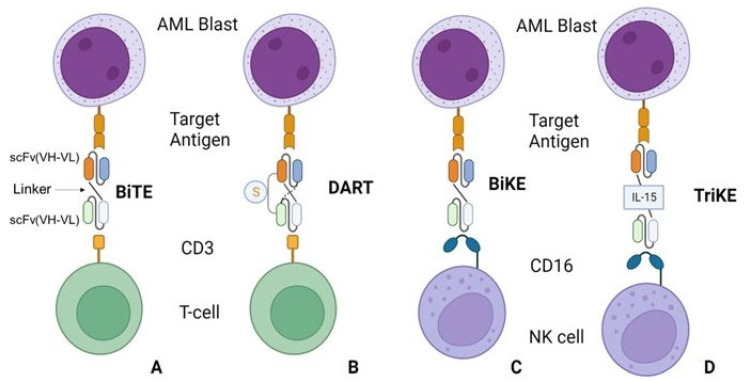Figure 1.
Schematic representation of different bispecific antibody constructs used for cancer immunotherapy. Bispecific antibodies have affinities for both a tumor antigen and an immune cell receptor. (A) BiTEs possess two scFv (VH-VL) regions, separated by a flexible linker (arrow), which bind to a tumor antigen and to the CD3 receptor to engage T cells. (B) DARTs are BiTEs with an alternative linker and a disulfide bond (denoted by “S”) designed to improve stabilization of the construct. (C) BiKEs have the same structure as BiTEs but bind to CD16 instead of CD3 to engage NK cells. (D) TriKEs are BiKEs that incorporate IL-15 in the linker domain to intensify the immune response. Abbreviations: AML—acute myeloid leukemia; Bike—bispecific T-cell engager; DARTs—dual affinity retargeting antibodies; BiKe—bispecific killer engager; scFv—single chain variable fragment; TriKE—trispecific killer engager; VH-VL—variable heavy and light chains. The figure was created with Biorender.com.

